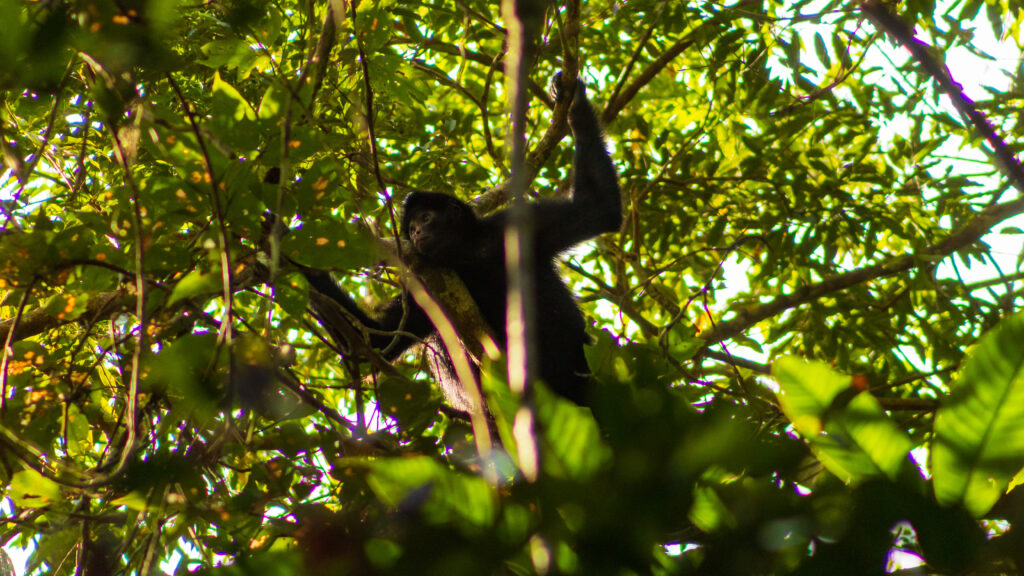Have you experienced waking up to the vocalisation of howler monkeys at 4:30 a.m.? or listened to a soundtrack between birds of different sizes mixed with the sounds of insects like cycads? Have you ever felt the sensation of heat and humidity at the same time? If your answer is yes, you know very well that you are in a tropical Amazon rainforest, and it is in this ecosystem where our second adventure begins. Welcome to Tambopata Research Center!
Tambopata Research Center (TRC) is a place within the magnificent Tambopata National Reserve located in the department of Madre de Dios, Peru; with primary type forests, bamboo and aguajal, which houses a large number of species of flora and fauna representative of the Peruvian jungle.
TRC to date registers 8 species of primates, of which one of them caught our attention the most, the black-faced black spider monkey, better known among locals as “maquisapa”, a species that, due to anthropogenic activities, it is very difficult to see. It was very satisfying to meet healthy groups of individuals of different ages, which fills us with excitement as their legacy will continue.
They are one of the largest primates in our Amazon and thanks to their ability to disperse seeds they help in the regeneration of forests. They need large hectares with food availability and at the same time tall trees to protect themselves from their predators. They are currently considered by the IUCN to be in “DANGER” status and are included in Appendix II of CITES due to poaching and deterioration of their habitat, making it our responsibility to protect them.
It is exciting to be in the forest and see the trees move in the distance, as if they were alive, and hear some branches break, slowly seeing these giants of the canopy approaching. During our evaluations we were fortunate to appreciate social behaviors very similar to that of humans, such as protecting the most defenseless, grooming, games between different members, even touching events in which a mother carries the calf on her body. We were also able to notice the different vocalizations they present between long, short and alert; The first was the one that surprised us the most since they used it to find out their location among the different subgroups and when night fell to regroup.
This species usually uses the highest stratum of the forest and to our surprise we were able to observe that sometimes they go down to the understory level to feed. They are characterized by being frugivorous, which means that most of their diet is based on the consumption of fruits, but they can also eat young leaves, flowers and mushrooms.
All the fauna present plays an important role in maintaining the good condition of the forest, from microorganisms to the imposing jaguar and the majestic harpy eagle as the top predators in this amazing forest.
It is necessary to take action if we want to continue observing these majestic animals in the wild, since as they are the main causes of their decline and the loss of their habitat, it is our responsibility to preserve them.
Authors:
Angie Remigio
Cris Sandoval
Lourdes Grace Ponce Huaranga
Stephanie Alexandra Riofrio Guarderas

Photo credit: Angie Remigio

0 Comments